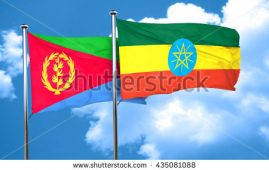Series of protests that engulfed Ethiopia’s largest region Oromia for a third full week left at least five people dead. The controversial “master plan” for the capital Addis Ababa was the prominent rallying cause of the protestors.
Misappropriation of school land for local officials’ personal use was the triggering factor for the first protest that began in Ginchi town (Western Shewa zone). Though residents lodged complaints at higher offices, the town officials went ahead with it triggering the protests on November 19-20.

The protests spread to at least a dozen locations in central and western Oromia, last week, involving elementary, high school students and, at times, local residents. Demonstrations took place in Haramaya University, in the east, and Meda Welabu University, in the south, as well.
Eyewitness accused police for its heavy-handed approach that left a handful dead, several wounded and hundreds detained across the region. Three high school students were confirmed dead last week, namely, Keresa Challa and Gutu Abera in Guliso, West Wellega zone and Dejene Serbesa in Bantu town, Tole wereda, South West Shewa zone.
Demonstrations of varying intensity continued at various locations in western and central Oromia this week. Protestors clashed with police on Monday and Tuesday in Adama University, whereas heavy police presence in Ambo University preempted potential demonstration there.
Ebisa Bulcho in Finchoa area and Nuredin Abdi in Haramaya wereda were killed this week, putting the total death count HornAffairs was able to confirm at five.
The government acknowledged four deaths in an official statement where it blamed subversive groups for misinforming and orchestrating the protests.
There are media reports putting the death count up to nine, though HornAffairs was unable to verify.
Facebook played a major role in relaying information about protests in small towns, as the private media is confined to the capital Addis Ababa while the state media remained silent.
The main opposition party, Oromo Federalist Congress, threw its weight behind the protests in the weekend endorsing the demands and threatening to formally join force.
On Wednesday, the Norwegian embassy posted a note in Nordic language indicating “there are reports of student unrest in Ambo and other university towns, and that there have been reports of confrontations between students and the police” and recommending its citizens to avoid demonstrations and gatherings.
An Embassy official told HornAffairs, “this is not a travel warning or travel advice as such, but rather travel information, which is less “binding” for Norwegian travelers”.
The controversial draft plan for integrated development of the capital Addis Ababa and its surrounding Oromia towns featured in the protests. The draft plan, popularly referred to as “the master plan,” was the reason for the deadly 2014 protests. Critics believe it will be detrimental to Oromo’s politico-economic status. The demand to make Afaan Oromo a federal language, maladministration, taxation, and others were raised by protestors.
*********
Please read the previous news reports (here and here) for some details.
You can find the Amharic version of the master plan here.






The controversial “master plan” for the capital Addis Ababa was the prominent rallying cause of the protestors. Where is this information?
…just in ethiopia there is democracy the governing class were killing and arresting other ethnic groups in the country we are still boring with it at this time citizens inthe country are dieying by the famine aswellas by the gov.t now all citizens finished their toleran they trust freedom and decide to fight for their freedom.we perfom elections trice in this election the party we all vote is denied the use power and fill the box by their own….now mass killing is taking place in oromo and Amhara people dueto their peaceful protest for freedom…please respect the real ethics of journalist and inform us the true information and news.thank u
5 ? I will gladly lynch you and your kind.